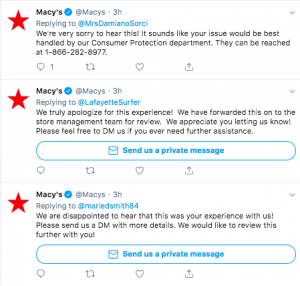Writing effective lead nurture emails is as much craft as it is art, and as with any craft, the key to doing it better is repeatedly doing it. And again, and again.
There’s a reason why we’re seeing above average email response rates in virtually all our projects, or why it’s not unusual for us to see 35%-40% open rates or 25% click to open rates on our emails. Don’t get us wrong – we’re no geniuses, but during the past five years, we’ve managed to do some good in the field of marketing automation-driven email marketing, and we feel now is a good time to start paying it forward. So we sat down and tried to break down the thought process that has gone into the top performing nurture emails we’ve written for our clients over the years.
We came up with the following four alternative approaches, and it’s important to emphasize that we’ve employed all of them, and each has been effective. Feel free to adopt and adapt them to your own needs.
“Check Out My Record Collection” or the Inventory Led Approach
The Inventory Led Approach to writing a nurture email looks at the process from the pragmatic perspective of leveraging our available content inventory.

It’s basically organizing your (hopefully vinyl) record collection and matching certain music to certain moods and situations, so you can never go wrong – you map your best, most relevant content assets to the task, usually by matching their types to the prospect lifecycle stage (so blog posts and light whitepapers for early stage, case studies and deep dive webinars for advanced stages, etc.).
Then, you line them up in reasonable order, and write brief email messages that each ends with a call to action to consume one of those pieces.
This approach is practical and therein lies its advantage: you use your existing content as a guide, and with good copy, you can meet your objective of promoting self-education among your readers without wasting time on coming up with unique story lines.
For example: for a client that develops security software, we’ve designed and crafted a series of 6 emails that are sent to early stage prospects. First, we’ve catalogued their blog inventory and whitepaper resource library and, consulting their analytics data, picked the best performing content pieces. Then we drafted very brief emails (about 100 words each) where each had a call to action to visit the blog or resource section.
And no, you don’t have to own vinyl records or even be a music lover to successfully implement this approach, although, we highly recommend vinyl records. They simply sound better.
“How You Doin’?” or the Conversation Simulator Approach
Doing a 180 from the previous methodology, we claim that a good nurture email behaves much like part of a conversation would: it flows from a previous action or discussion, and it naturally leads forward. A good nurture email basically tells its reader why they’re receiving the email, just like saying to someone “Remember that thing we were just talking about”? Reminding your recipient their original interest (in case of inbound leads) and telling them you’re following up on it is called Contextualizing.
Big word, but a very important one. Now, to keep on with the tradition of terms and phrases, let’s break down two other key words we’ve mentioned:
Flow – the content should be a natural result or product of the context. For example, if the recipient has originally downloaded a whitepaper, then after mentioning it for context, expand on one of its main points and highlight it.
Leads Onward – The part in a conversation when you’ll say something like, “here’s what’s gonna happen next”, or “you know what, let’s do this”. You can use it as a call to action, but you can also use it to prime the reader for receiving the next email in the series.
Here’s an example of this approach we used for a client that provides specialized kits for mobile app developers. The context was a 30-days trial nurture flow. The entire track was constructed as a series of progressive conversations between a consistent persona and the recipient, offering help, information and case studies to enhance the trial experience. The track showed persistent high engagement rates.
“Let’s Talk Shop” or the Elevator Pitch Approach
This approach is good when the objective of the nurture track is to deliver the main value propositions of your business, without beating around the bush. So, write down your “elevator pitch” in three paragraphs, like so:
- The problem(s) your solution is addressing.
- Who is it relevant for and why they should care.
- What’s unique about it.
Each paragraph then becomes the basis of one email in the flow, and you expand it by adding 2-3 more paragraphs, as necessary, and preferably conclude with a call for direct action like registering to a webinar or scheduling a call with a sales rep. Simply put, you waste no time, and you tell it like it is. It’s a tad aggressive, but it works in certain cases, especially when you want to address a specific demographic or target audience, and this approach fits their profile.
Although it worked for us, you don’t really have to write the nurture emails in the elevator. We just like the peace and quiet in there, especially in tall buildings.
“Trust Me, I’m a Doctor” or the Total Value Approach
If we’ve learned anything in the past five years of sending countless B2B marketing emails, is that people appreciate offers to help, usually in the form of free, valuable information – and they respond to it, with a high response rate. A classic type of such valuable content is a Best Practice Write-Up. Once again, it’s a simple concept:
- Isolate a business process that’s integral to your audience’s own business.
- Make sure it’s a process your audience will naturally assume you have authority on, or at least be willing to accept it.
- Provide a series of steps and tips that promote a good practical way of completing that process.
For example: another one of our clients provides information security products (it’s not the same client as before). We have implemented a drip campaign for new leads, where the first email included links to three useful best practices. The email was plain text, and it saw an average of >30% open rate and 33% click throughs – not because we shared some new and never heard of information, but simply because we gathered and offered required information that the target audience was interested in – and asked for nothing in return.
People love freebies, but remember to include a CTA once in awhile. After all, you’re not trying to compete with Wikipedia or StackOverflow here.
So there you have it, folks – our top four approaches for writing effective nurture emails, and they really work well. We love to focus on the positive, and the “Do’s”, but if you want to read about the “Don’t’s”, check out this good article.
Digital & Social Articles on Business 2 Community(110)





